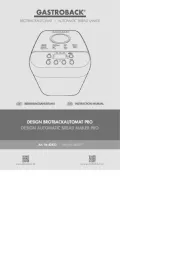WestBend 41028 Handleiding
WestBend
Broodbakmachine
41028
Bekijk gratis de handleiding van WestBend 41028 (21 pagina’s), behorend tot de categorie Broodbakmachine. Deze gids werd als nuttig beoordeeld door 85 mensen en kreeg gemiddeld 3.8 sterren uit 43 reviews. Heb je een vraag over WestBend 41028 of wil je andere gebruikers van dit product iets vragen? Stel een vraag
Pagina 1/21

1
WEST BEND - AUTOMATIC BREAD & DOUGH MAKER
RECIPES AND INSTRUCTIONS – L5231
R W BEGISTER THIS AND OTHER EST END® PRODUCTS THROUGH OUR WEBSITE
www.westbend.com
TO PREVENT PERSONAL INJURY OR PROPERTY DAMAGE, READ AND FOLLOW THE INSTRUCTIONS AND
WARNINGS IN THIS CARE/USE INSTRUCTIONAL MANUAL
IMPORTANT INFORMATION ON PROTECTING ELECTRONIC CONTROL - To protect bread maker’s
electronic control against possible damage caused by surges in electrical power line, we recommend using a surge protector device,
available in the electronic department of most discount/hardware stores. Simply plug surge protector into the electrical outlet, then
plug bread maker cord into receptacle of surge protector.
IMPORTANT SAFEGUARDS- When using electrical appliances, basic safety precautions should always be followed to
reduce the risk of fire, property damage, electrical shock and/or personal injury, including the following:
• Read all instructions before using.
• Do not touch hot surfaces. Use handles or knobs. Always use potholders or oven mitts to handle hot bread pan or hot bread.
• Do not put hand inside oven chamber after bread pan is removed. Heating unit will still be hot.
• To protect against electric shock, do not place cord, plug or appliance in water or other liquid.
• Close supervision is necessary when any appliance is used by or near children.
• Unplug from outlet when not in use and before cleaning. Allow to cool before putting on or taking off parts and before
cleaning appliance.
• Avoid contacting moving parts.
• Do not operate appliance with a damaged cord or plug or after the appliance malfunctions or has been damaged in any
manner.
• The use of accessory attachments not recommended by The West Bend Company may result in fire, electrical shock or
personal injury.
• Do not use outdoors.
• Do not let cord hang over edge of table, counter or surface area, or touch hot surfaces.
• Do not place appliance on or near a hot gas or electrical burner, or in a heated oven.
• Do not use appliance for other than intended use.
• To disconnect power, press stop button to turn control off, then remove plug from wall outlet. Never pull on the cord.
• Extreme caution must be used when moving appliance during operation.
SAVE THESE INSTRUCTIONS - Your bread maker needs no special care other than cleaning. See warranty section in this
booklet for service details. Do not attempt to repair it yourself. For household use only. An off odor from motor may be noted with
first use, which is normal and will disappear with use. WARNING: To prevent personal injury or property damage caused by fire,
always unplug this and other appliances when not in use.
ELECTRIC CORD STATEMENT - CAUTION: Your bread maker has a short cord as a safety precaution to prevent
personal injury or property damage resulting from pulling, tripping or becoming entangled with the cord. Do not allow children to be
near or use this bread maker without close adult supervision. If you must use a longer cord set or an extension cord when using the
bread maker, the cord must be arranged so it will not drape or hang over the edge of a counter-top, tabletop or surface area where it
can be pulled on by children or tripped over. To prevent electrical shock, personal injury or fire, the electrical rating of the extension
cord you use must be the same or more than the wattage of the bread maker (wattage is stamped on backside of bread maker).
IMPORTANT SAFETY INSTRUCTIONS - This appliance has a polarized plug (one blade is wider than the other). As a
safety feature, this plug will fit in a polarized outlet only one way. If the plug does not fit fully in the outlet, reverse the plug. If is still
does not fit, contact a qualified electrician. Never use with an extension cord unless plug can be fully inserted. Do not attempt to
defeat this safety feature. Your West Bend® Automatic Bread & Dough Maker was designed for use with 120 volt, 60 hz electrical
service ONLY. Use of your bread and dough maker with a converter or transformer will destroy the electronic control and will void
your warranty.

2
“QUICK START” STEPS FOR THE FIRST LOAF
1. WHAT YOU WILL NEED
FOR MEASURING FOR MAKING BREAD
• See-through liquid measuring cup with graduated markings Water
• Set of solid, nesting type measuring cups for dry ingredients Butter or Margarine
• Set of measuring spoons Bread Flour
• Kitchen spoon Sugar
• Table knife Dry Milk
Salt
Active Dry Yeast
2. HOW TO MEASURE - Measuring ingredients the right way with the correct measuring cups and spoons is the most important
step to follow when making bread. See measuring section for more information.
REMEMBER TO:
Always measure liquid ingredients in see-through measuring cup with graduated markings. Liquid should
just reach marking on cup at “eye-level”, not above or below. For easier measuring, set cup on inside of top kitchen
cabinet.
Always spoon dry ingredients, like bread flour, into solid, nesting type measuring cups, then level off with
table knife.
Never scoop measuring cups into dry ingredients as this will pack down the ingredients, causing the dough to
be dry and the loaf to be short.
Always use set of measuring spoons to measure smaller quantities of dry and liquid ingredients, measuring
level, not rounded or heaping.
3. MAKING BASIC WHITE BREAD - 1½ LB. LOAF
9 ounces lukewarm water (1 cup + 2 tablespoons), about 75-85° F.
2 tablespoons butter or margarine
3 cups bread flour
1½ tablespoons sugar
1½ tablespoons dry milk
1½ teaspoons salt
2 teaspoons active dry yeast
1. Put knead bar in pan over shaft. Twist if needed to slide down all the way.
2. Measure water and add to pan with butter.
3. Measure bread flour, sugar, dry milk and salt; add to pan. Level ingredients.
4. Make shallow well in center of dry ingredients; add yeast. . Lock pan into machine. See directional arrow on edge of pan for which
way to turn.
4. PROGRAMMING CONTROL FOR MAKING BREAD
1. Plug cord into electrical outlet. Machine is already programmed for making basic/specialty bread at the medium crust setting.
Arrows will point to basic/specialty and medium settings on control.
2. Press start/stop button to turn machine on. Red light will come on. Bread making process will begin. Bread will be done in 3
hours and 10 minutes. Timer will count down in minutes so you always know how much time remains until bread is done.
3. When done, alert will sound and 0:00 will appear in display. Turn machine off by holding start/stop button down until red light
goes out, about 4 seconds.
4. Unlock pan and remove with hot pads. Shake loaf out and place on rack to cool 15 to 30 minutes before slicing. Wash pan
following cleaning instructions in this book.
KNOW YOUR INGREDIENTS
Although bread making seems very basic, it is a science in which the proportions of ingredients are critical. Read the following
information to better understand the importance of each ingredient in the bread making process. Also, always make sure ingredients
are fresh.

3
• FLOUR is the main ingredient in making bread. It provides structure and food for the yeast. Several different types of flour
can be used in your bread maker, but DO NOT USE all-purpose flour, cake flour or self-rising flour as poor results will be
obtained. BREAD FLOUR SHOULD be used in your bread maker as it contains more gluten-forming proteins than all-purpose
flour and will provide tall, well formed loaves with good structure. Several different brands of bread flour are available for use in
your bread maker.
• WHOLE WHEAT FLOUR can be used in your bread maker at the whole wheat setting. This flour contains the entire
wheat kernel, including the bran and germ; therefore, breads made with 100% or a high percentage of whole wheat flour will be
lower in height and heavier in texture than bread made with bread flour. The whole wheat setting on your machine has a longer
knead time to better develop the structure of wheat breads for optimum results.
• RYE FLOUR can be used in combination with bread flour in the preparation of rye or pumpernickel bread. But, it cannot be
used alone as it does not contain enough protein to develop adequate gluten for structure.
SPECIAL NOTE ON FLOUR - How to make minor adjustments for dough: All flours are affected by growing conditions, milling,
storage, humidity and even the manufacturer. While not visibly different, you may need to make some minor adjustments when using
different brands of flour as well as compensating for the humidity in your area. Always store flour in an air-tight container. Store
whole grain flours (whole wheat, rye) in refrigerator to prevent them from becoming rancid. Measure the amount of flour as directed
in each recipe but make any adjustment after the first 8 to 10 minutes of continuous kneading. Feel free to check the condition of the
dough during the knead cycle as this is the only time you can make any minor adjustment:
• Open cover and touch dough. If it feels a little sticky and there is a slight smear under the knead bar, no adjustment is
necessary.
• If dough is very sticky, clinging to the sides of pan or in one corner, and is more like a batter than a dough, add one
tablespoon flour. Allow it to work in before making any further adjustment.
• If dough is dry and the machine seems to be laboring during kneading, add one-teaspoon lukewarm water at a time. Once
again, allow it to work in before making any further adjustments.
• The dough is just right near the end of the kneading cycle when it is soft to the touch, smooth in appearance and just a bit
sticky, leaving a slight residue on your fingers-the feel of perfect dough. The bottom of the bread pan will also be clean of any
dough residue.
• DO NOT EXCEED 3 cups of bread flour for the 1½ pound loaf or 2 cups bread flour for the 1 pound loaf. Breads
containing whole wheat, cereals or oats should not exceed a total of 3½ cups for the 1½ pound loaf or 2½ cups for the 1 pound
loaf.
• SUGAR AND OTHER SWEETENERS provide food for the yeast, add height and flavor to the bread and give the crust a
golden color. Types of sweeteners that can be used include sugar, brown sugar, honey, molasses, maple syrup, corn syrup and
fruits, whether dried or fresh. When using a liquid sweetener such as honey or molasses, the total amount of liquid in the recipe
will need to be reduced slightly by the same measurement of liquid sweetener used. A special tip when measuring sticky liquid
sweeteners is to coat the measuring spoon with vegetable oil before measuring. This will help the liquid sweeteners slide right
out. DO NOT USE ARTIFICIAL SWEETENERS as a substitute for sugar and other natural sweeteners as the yeast will not
react properly and poor results will be obtained.
• MILK enhances flavor and increases the nutritional value of bread. Any type of milk (whole, 2%, 1%, skim, buttermilk or
canned evaporated milk) can be used. Refrigerated milk must always be warmed to 75-85° F before adding to bread pan. Warm
in a glass-measuring cup in microwave or in a small pan on top of the range. DO NOT HEAT MILK ABOVE 110° F AS THIS
COULD AFFECT THE YEAST.
• WATER used in combination with dry milk is a good substitute for regular milk and must be used when using the timer
feature as regular milk can spoil when left at room temperature for several hours. Use lukewarm water, about 75-85° F, for best
results. DO NOT USE WATER ABOVE 110° F AS THIS COULD AFFECT THE YEAST.
Using too much liquid can cause the bread to collapse during the bake cycle. During humid weather, slightly less liquid may be
needed as the flour will absorb moisture from the air. In dry weather, slightly more liquid may be needed as flour can lose
moisture. When you experience a severe change in weather, it is best to check the condition of the dough during the knead cycle
as noted in the FLOUR paragraph for any minor adjustment that may be needed.
Water and milk are mostly interchangeable in recipes. Eliminate dry milk in recipes when substituting milk for water. Check
dough during the knead cycle for any minor adjustments. Slightly more milk may be needed when substituting for water.
Product specificaties
| Merk: | WestBend |
| Categorie: | Broodbakmachine |
| Model: | 41028 |
Heb je hulp nodig?
Als je hulp nodig hebt met WestBend 41028 stel dan hieronder een vraag en andere gebruikers zullen je antwoorden
Handleiding Broodbakmachine WestBend

8 Juli 2023

6 Juli 2023

2 Juli 2023

2 Juli 2023

30 Juni 2023

30 Juni 2023

29 Juni 2023

29 Juni 2023

28 Juni 2023

28 Juni 2023
Handleiding Broodbakmachine
- Ufesa
- Gastroback
- Breadman
- Kalorik
- BEKO
- Bestron
- Camry
- Hamilton Beach
- ProfiCook
- Morphy Richards
- Cuisinart
- Caso
- Koenig
- Termozeta
- Nesco
Nieuwste handleidingen voor Broodbakmachine
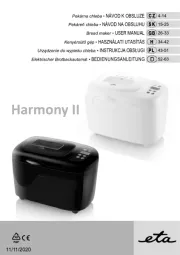
4 Juli 2025
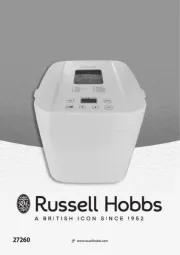
3 Juli 2025
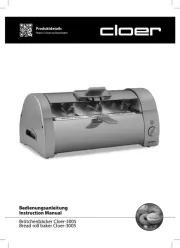
16 Juni 2025

10 Juni 2025
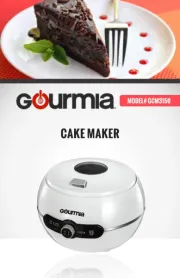
10 Juni 2025

9 Juni 2025
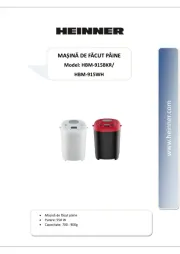
1 Mei 2025
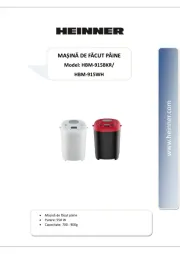
1 Mei 2025
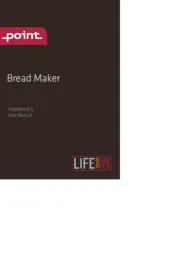
18 April 2025
